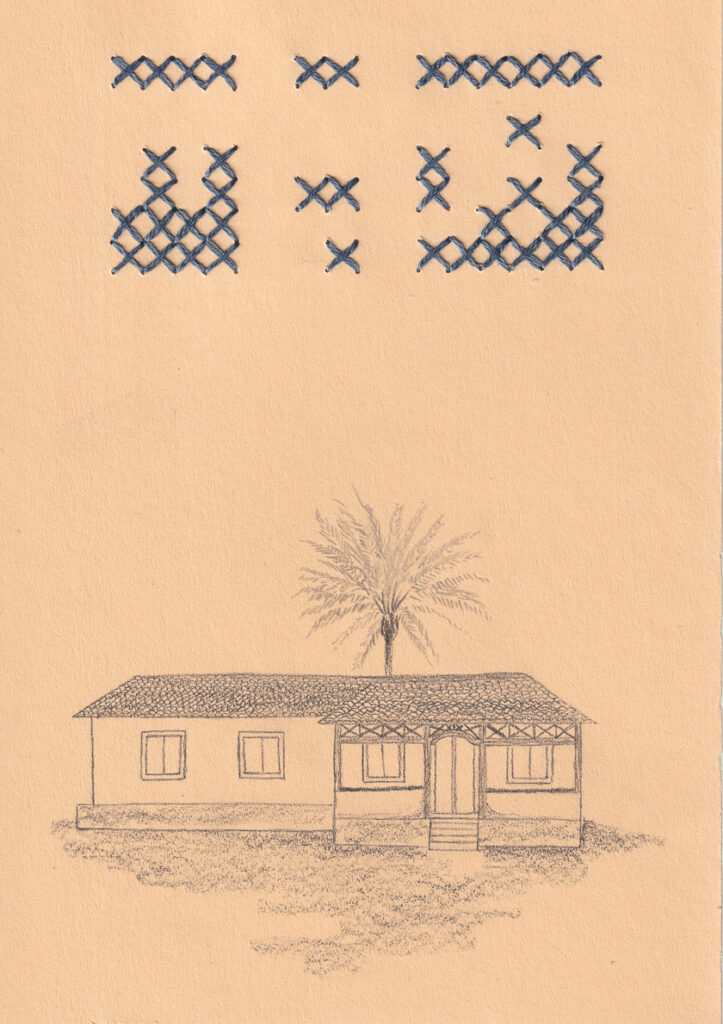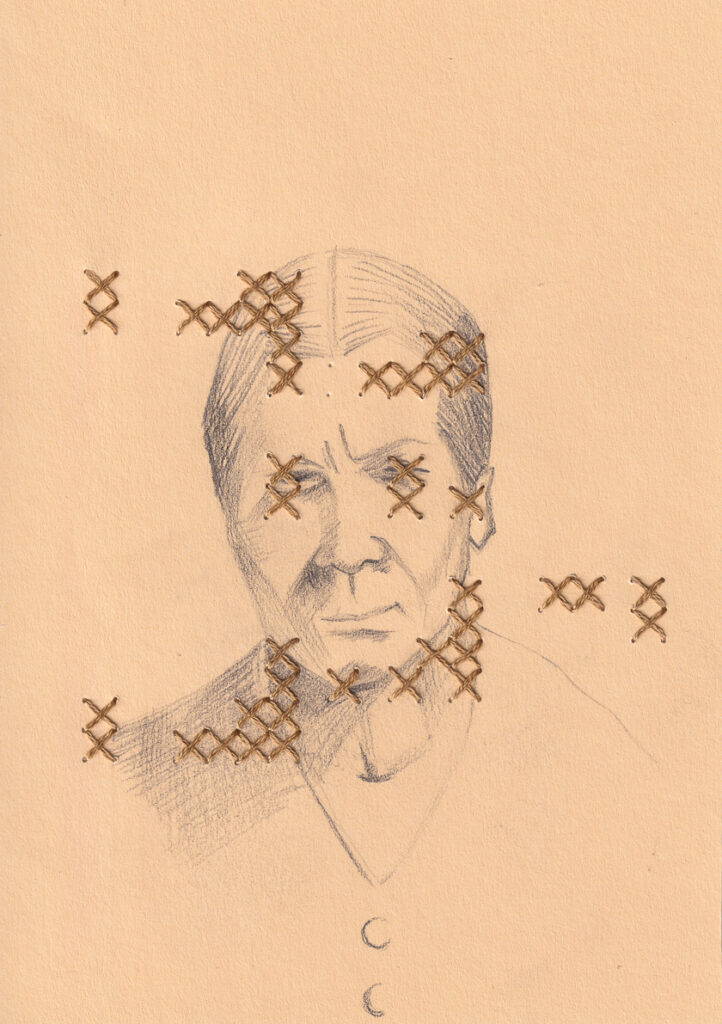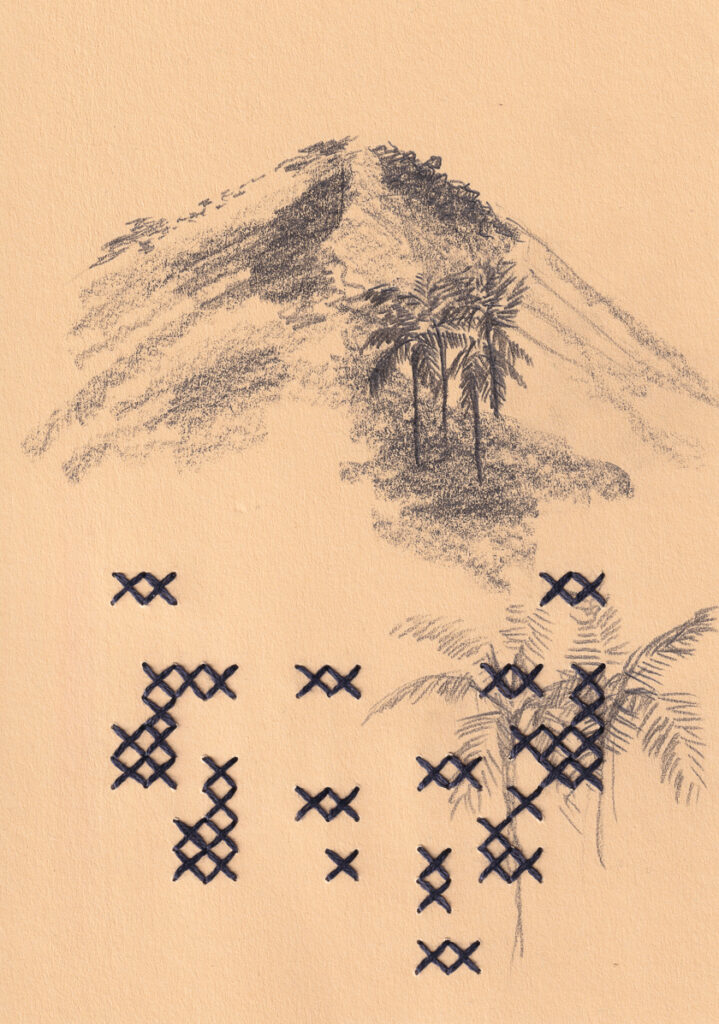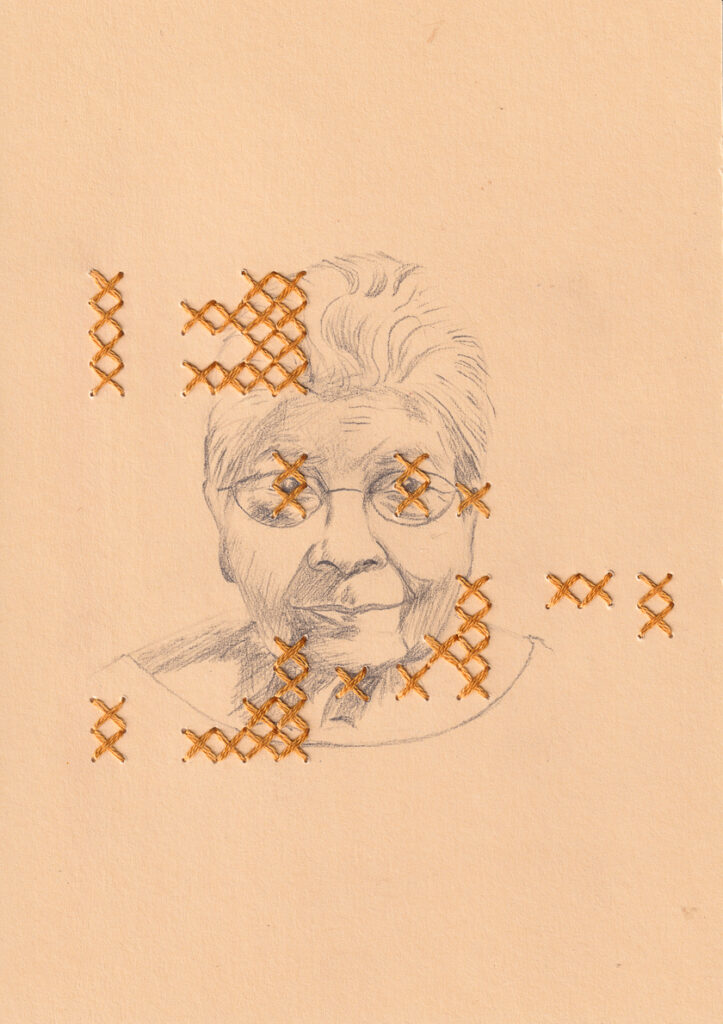In my grandmother’s front yard there is a coco de macuco palm tree that is more than 70 years old. This miniature palm, known by botanists as Syagrus weddelliana, is endemic to my home, Magé, a region in the middle of the Atlantic Forest, in the state of Rio de Janeiro, Brazil. In front of the centenary house, coco de macuco appears in the most emblematic family portraits as a kind of plant relative, small for a palm, but gigantic compared to the height of the women in my family, which is mostly below 1.55 m or five foot one. This story inspired me to create a large format embroidery piece and write an article published on Voices Magazine.
Embroidery Pieces
The piece part of the 2024 “Plant Fever” exhibition at Pillnitz Palace and Park (Dresden, Germany) questions if it is possible to know a plant by extracting, classifying, and collecting it. The site specific work puts in relation two plants first catalogued by the same male botanist, the palm species Chrysalidocarpus lutescens, living in the greenhouse in Pillniz since its reopening in 2009, and Syagrus weddelliana, a miniature palm endemic to the Serra dos Órgãos National Park, a mountain region in Rio de Janeiro, Brazil.
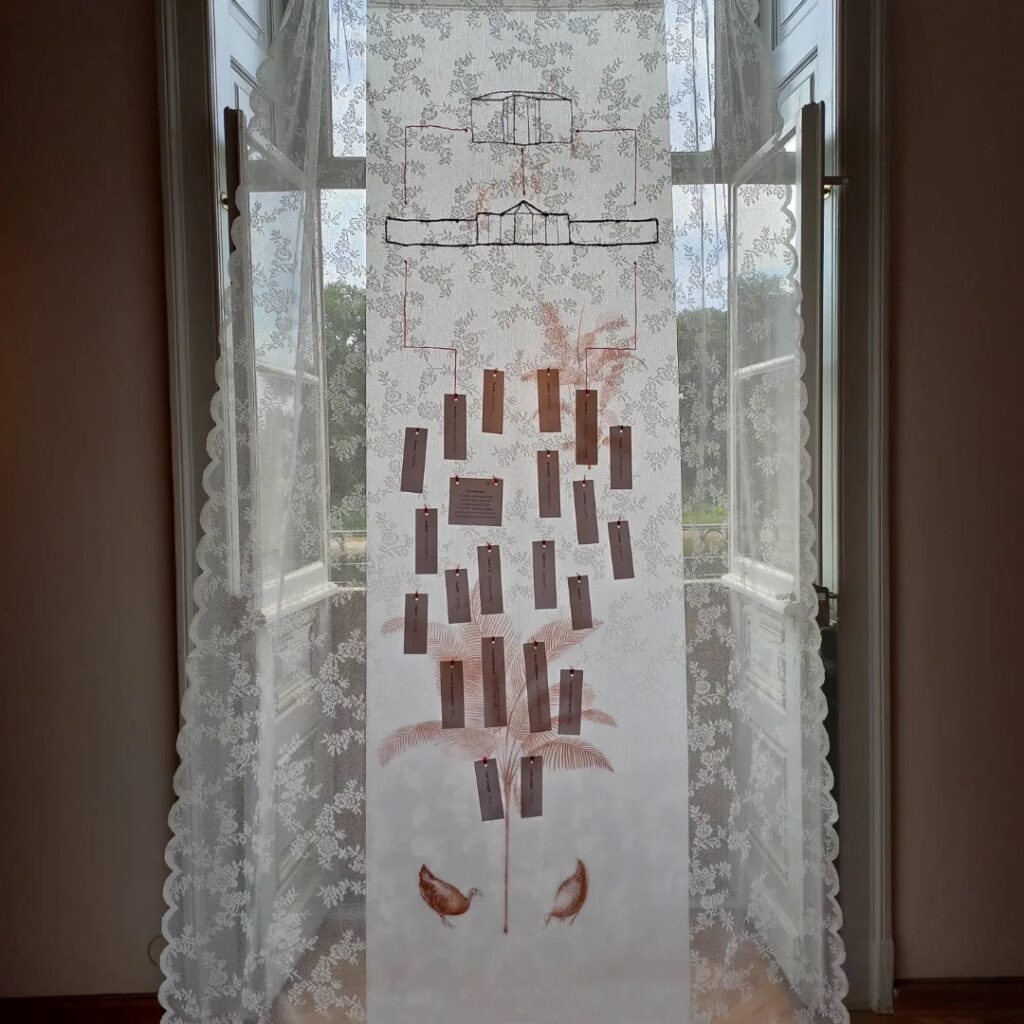
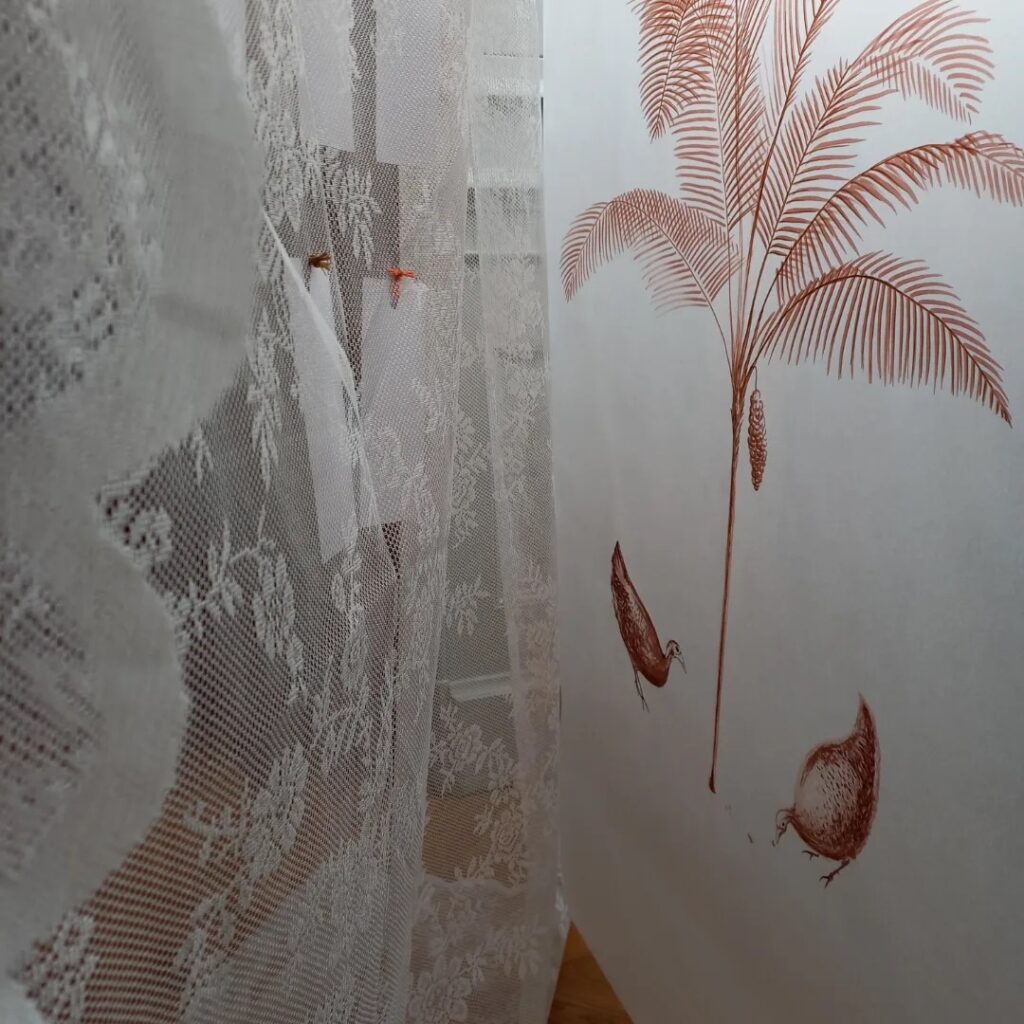
In the “Coco de macuco worldings” series the ASCII representation for the palm’s name “coco de macuco” was embroidered as binary code. The depicted places and faces represent the world “coco de macuco” inhabits: the house on its back, the mountain on its front, and two generations of women who cared for the palm.
